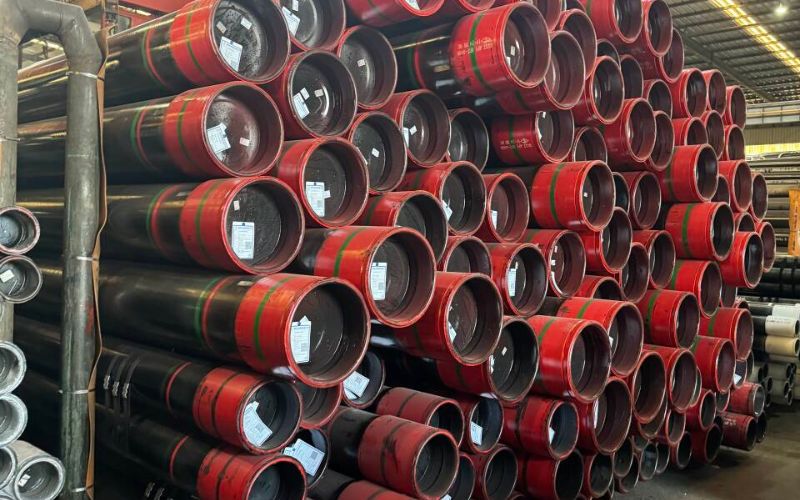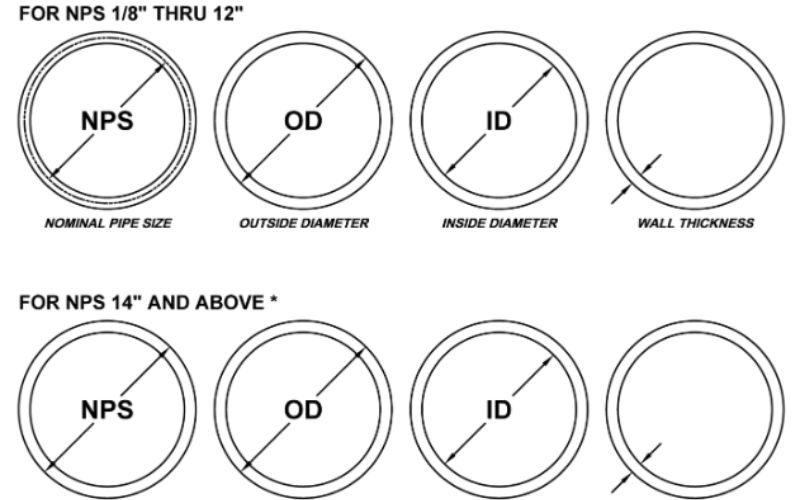The various pipe sizes and weight thickness make an important topic for industrial and construction applications. Sch 30 pipe is a schedule mostly employed in different industries as it is light, strong, and cheap. It is, however, important to go into certain details such as their sizes, wall thickness, and operating pressure so as to properly apply them to whatever design. The next few sections will discuss Schedule 30 pipes in detail to help you come to an informed decision. This guide will be helpful when designing the system, specifying the materials, and determining the applicability of Schedule 30 pipes to any project on which one may be working.
What are the Dimensions of Schedule 30 Steel Pipe?
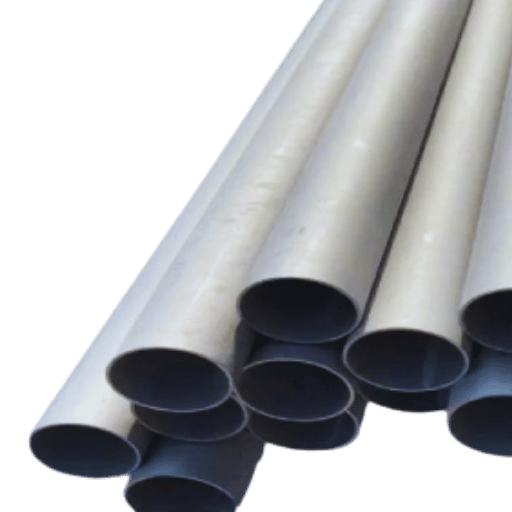
As shown in the chart, Schedule 30 steel pipes have standard dimensions, including the outer diameter and the wall thickness. Their most popular sizes are:
- 2-inch Schedule 30 steel pipe: An outer diameter for this size is about 2.375 inches, while the wall thickness is 0.109 inches
- 4-inch Schedule 30 steel pipe: At about 4.500 inches of outer diameter and 0.140 inches of wall thickness
- 6-inch Schedule 30 steel pipe: With approximately 6.625 inches of outer diameter and 0.170 inches of wall thickness
⚠️ Important Note: The above exactly defines the limits of each and helps prevent any major or minor errors internally, i.e., fitment, or externally, i.e., dimension, and has been popular in systems of low pressurization and in general-purpose systems popularly used in factories and offices. However, where exact dimensions are required, reference to the official standards or the manufacturer’s data sheet is always recommended.
How to Measure Pipe Dimensions Correctly?
In order to get the right pipe dimension on the spot, follow the simple procedure of dimensions as follows:
- Determine the Outer Diameter (OD):
Take the caliper or a piece of measuring tape and get the size across the largest external part of the pipe
- Measure the Wall Thickness:
Get a portion of the wall and measure the thickness of the wall using a caliper. It is essential that this measurement is taken at a clean and smooth surface of the pipe.
- Calculate the Inner Diameter (ID):
Remove twice the measurement of wall thickness from the total outer diameter. This gives a rough estimate of the internal diameter of the pipe.
- Identify Pipe Size:
Refer to the measurements in a given table of sizes for pipes and try to match the respective nominal size. Remain within the confines of the manufacturer or other reliable resources for accurate dimensioning.
💡 Useful Tip: These simple steps allow for accurate sizing for any system design, including for compatibility purposes.
What is the Typical Pipe Thickness in mm?
The thickness of pipes can vary depending on the material involved, the intended use, and the standard followed:
- Steel Pipes (Schedule 40): In common practice, a pipe with a thinner wall thickness of around 2.77 mm is for smaller diameters, such as 1/2 inch nominal size, while a wall thickness of 9.27 mm is for an 8-inch nominal size.
- PVC Pipes: An average pipe thickness may go as low as 1.6 mm and can go up to 6.6 mm, all depending on pipe diameter and pressure rating.
For precise values, one must always look into the revered standard or the manufacturer’s document.
Understanding Sch 30 Steel Pipe Dimensions
Steel pipes with thinner walls than other heavier schedules, like that of 40 or 80, are commonly referred to as sch 30 pipe steel. Take, for instance, a 6-inch SCH 30 steel pipe; nominally, the thickness of its wall will be around 0.156 inches (3.96 mm) as shown in their respective 30 chart. With this thinning, the requirement of weight-sensitive, low-pressure applications can be best served by these pipes.
🔧 Key Point: All schedule changes, however, do not affect the O. D therefore, the same fittings apply for any given NPS. ASME B36.10M specifies the exact sizes and conditions for the suitability of the products.
How is the Wall Thickness of Sch 30 Pipe Determined?
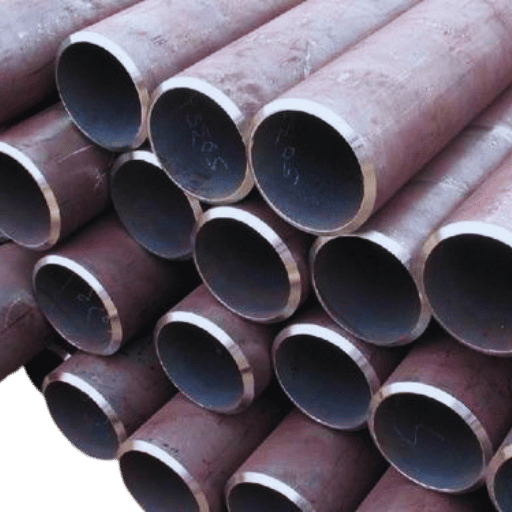
Factors Affecting Wall Thickness
- Pipe Size: The larger pipe diameters usually entail thicker pipe walls to maintain structural integrity against internal pressures.
- Operating Pressure: Greater internal pressures require the pipe walls to be thicker to prevent deformation or failure of the pipe.
- Material Strength: Properties affecting the performance of pipe materials, such as tensile strength and yield strength, will also dictate wall thickness.
- Temperature: Higher operating temperatures lower material strength and hence require higher wall thickness for safety.
- Corrosion Allowance: For pipes subjected to corrosive environments, an additional thickness is often provided for anticipated loss of material through corrosion with time.
Comparing 30 Pipe Thickness with Other Schedules
A Schedule 30, a Sch 30 pipe, has a lesser wall thickness than Sch 40 pipes, Sch 80 pipes, and Sch 160 pipes, but has a greater thickness than Sch 5 and Sch 10 pipes. Sch 30 pipe wall thickness is defined by the nominal pipe size (NPS) and pressure rates appropriate to such sizes.
Why Pipe Thickness in mm Matters?
It is a fact that for the successful and safe work of the gas and heat supply systems, it is necessary to define the pipe wall thickness in millimeters. Thicker walls add strength to the pipe, enabling it to withstand higher pressures without failing, as well as providing some protection against other threats. When distances are presented in millimeters, it is also easy to reproduce these measurements in all systems, adhering to all of the international standards.
Moreover, the SCH 30 pipe is made with a certain thickness of the pipe wall so as to prolong the usage of the pipe, especially in places where the pipe is exposed to corrosion, excessive heat, or environmental stresses. The other effect of this is that the system is able to be in use for longer, hence avoiding the costs of repairs and the possible dangers that this can cause.
What is the Pressure Rating for Schedule 30 Pipe?
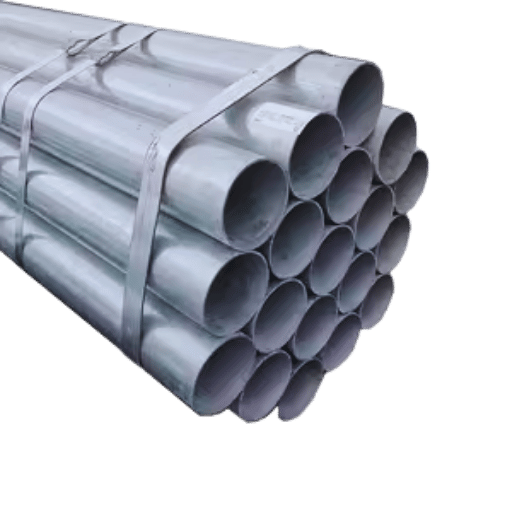
Understanding Low-Pressure Ratings for Sch 30 Pipe
In applications where the schedule number is lower, sch 30 pipe may be used to perform under pressure; however, it tends to be a smaller duty pipe because it is thin-walled. The specific pressure rating is affected by the pipe material, temperature of the pipe, and size of the pipe. In this case, standard steel with schedule 30 pipes may have pressure ratings between about 150 and 300psi. However, this is not constant and must therefore be validated through the manufacturer’s specification for that particular pipe or any relevant piping standard.
⚠️ Critical: Critical safety appropriate usage needs consideration of the context of use and guidance from a reliable source, intolerant to dangerous practices except where it is a safe use, as for instance, ANSI/ASME helps.
How 30 Carbon Steel Pipe Handles Medium to Low Pressure
- Composition of Durable Materials: The 30 carbon steel pipes consist of strong materials that provide adequate strength with deformation resistance; therefore, these pipes can ideally be used for systems of medium and low pressure.
- Corrosion Resistance: Although a little less resistant than stainless steel, the 30 carbon steel pipes can be moderately exposed to certain environments with the application of protective coatings for their reliability in non-aggressive conditions.
- Thermal Compatibility: The piping remains without any loss of structural integrity in moderate temperature ranges, allowing efficient performance, accommodating expansion and contraction thermally without any significant threat to failure.
- Cost-Effectiveness: Due to their being commonly available and relatively low cost to manufacture, these 30 carbon steel pipes render a very cost-effective option for systems not requiring evaluation for high pressure or extremely aggressive environments.
Comparing Pressure Rating with Other Schedules
Pressure rating assessment vis-a-vis pipe schedules stems primarily from diameter and wall thickness considerations of the pipe in question concerning resisting internal pressure. Here is a typical comparison for the different pipe schedules:
- Schedule 10: Thin-walled, generally considered a low-pressure application, where weight and cost efficiency are the priority, and hence are not subjected to high-pressure systems.
- Schedule 20: Slightly thicker than Schedule 10 and provides marginally better pressure resistance but is still used mostly for low-stress environments and mild working pressure applications.
- Schedule 40: Extremely common, it retains the balance of wall thickness over pressure handling and, therefore, is used for medium-pressure applications.
- Schedule 80: Has thicker walls than Schedule 40 and hence is considered for higher-pressure systems and harsher environmental stress applications.
- Schedule 120: Even thicker than Schedule 80, these systems require the utmost durability and strength.
- Schedule 160: Among the thickest walls available in the market, suitable for exceptionally high-pressure applications where safety and durability are of prime concern.
- XXS (Double Extra Strong): Schedule would be the thickest, used in ultra-specialized high-pressure applications where extreme structural integrity is imperative.
📊 Summary: Each schedule carries individual traits and finds its selection depending on system requirements, weighing options such as pressure containment, weight, and cost.
Where to Find a Reliable Pipe Supplier for Schedule 30 Steel Pipes?
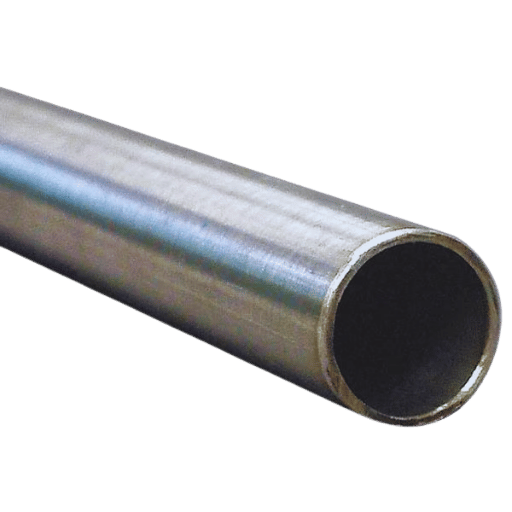
Top Schedule 30 Pipe Suppliers in the Market
There is a solution for those having problems with consistent suppliers of sch 30 pipe – Balingsteel. The company manufactures steel products of high quality and can fulfill any customer’s demands. With vast stock holding, reasonable prices, and an efficient customer service team, they remain the number one choice for all kinds of ordinary and tailor-made orders. Baling Steel will always have you covered, whether you need to use steel in heavy-duty construction or in a specific latitude.
Factors to Consider When Choosing a Pipe Supplier
✓ Quality of Materials
Make sure that the supplier offers pipes manufactured with high-grade, durable materials, fulfilling industry standards and certifications.
✓ Range of Products
Consider a supplier with a broad product range capable of servicing both common markets and special applications.
✓ Customization
Consider whether a supplier can provide customized solutions to fulfill specific requirements of a project, like unusual sizes or coatings.
✓ Pricing and Value
Check pricing schemes and evaluate the balance struck between cheapness and offered quality for long-term worth.
✓ Reliability with Timely Delivery
To ensure no hindrance in your project caused by late or inconsistent material delivery, go for a reliable supplier with demonstrated expertise in logistics.
What is the Weight and Pipe Wall Thickness of Schedule 30 Pipe?
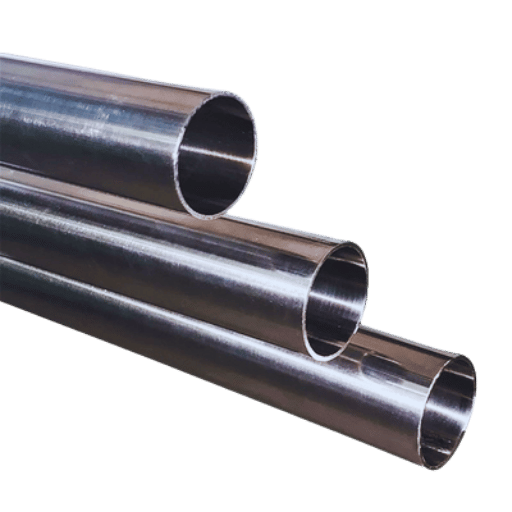
How to Calculate Pipe Weight?
A pipe’s weight can be given by the formula:
Weight per Foot Formula
Weight per Foot = (Pipe Outer Diameter – Wall Thickness) × Wall Thickness × 10.68
The formula is for steel pipes and takes nominal dimensions in inches. Here’s a stepwise analysis:
- Take the Pipe’s Dimensions:
Get the OD and WT of the pipe. Usually, these are mentioned in the specification of the pipe.
- Do Outer Diameter Minus Wall Thickness:
This gives the inside diameter of the pipe.
- Multiply by Wall Thickness:
This calculates the cross-sectional area of the pipe wall.
- Multiply this by 10.68:
This gives the weight per foot for steel pipes.
💡 Important: This method assures the accurate calculation of the weight of the pipe for its application, especially when taking into consideration the physical properties of the pipes. Specifications have to be cross-referenced in the event of any deviation concerning material or otherwise, and, if in doubt, even with pipe manufacturers.
The Impact of Wall Thickness on Pipe Weight
It is by definition the wall thickness of a pipe that acts as the weight of the pipe. The thicker a pipe is, the more it weighs for every given length of the pipe, directly proportional. This explains why when the thickness of the Sch 30 pipe is increased, more material goes into the pipe, and hence it becomes heavier. The outer diameter, as well as the wall thickness of the pipe, must be taken into consideration to derive the actual weight since these two dimensions together give the cross-sectional area of the pipe and hence its weight.
Using the 30 Pipe Chart for Accurate Measurements
The 30 Pipe Chart is one of the quickest references for assessing the weight and dimensions of a particular pipe. In order to read the chart:
- Find the row corresponding to the pipe’s outside diameter.
- Trace it along to the column indicating the wall thickness.
- At the intersection, the weight of the pipe per unit length is specified.
- The measurements must be precise and according to standard units; for the calculations to be reliable, a consistent set of data inputs must be used.
✓ Advantage: The chart makes it easier to calculate, hence providing time, yet retaining the calculation’s precision.
Frequently Asked Questions (FAQs)
Reference Sources
- Piping Strength – University of Oklahoma
- This document contains pipe schedule information, including Schedule 30, and is maintained by an academic organization.
- Pipe (fluid conveyance)
- Steel
- Carbon steel
- Black Steel Pipe Supplier In China



